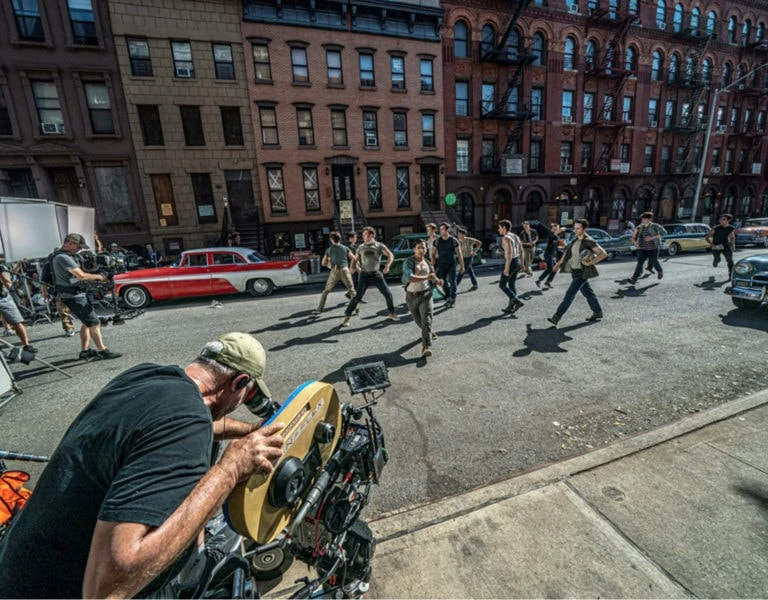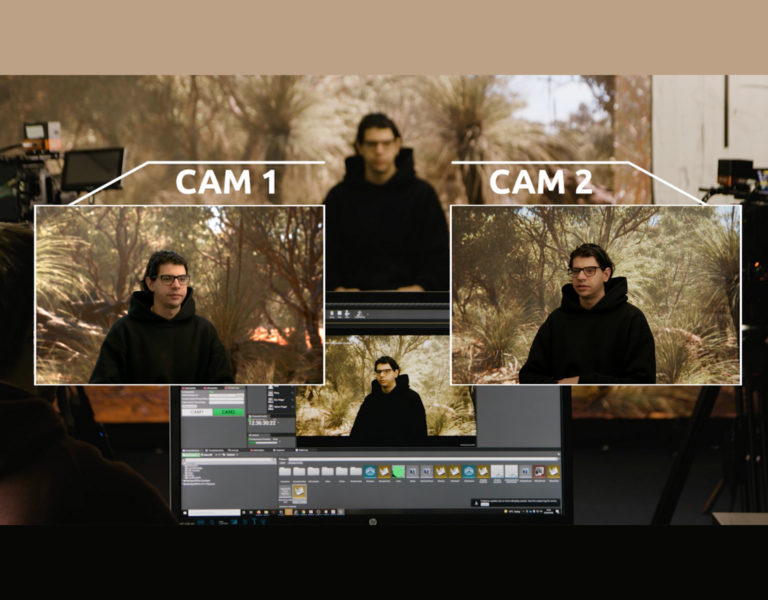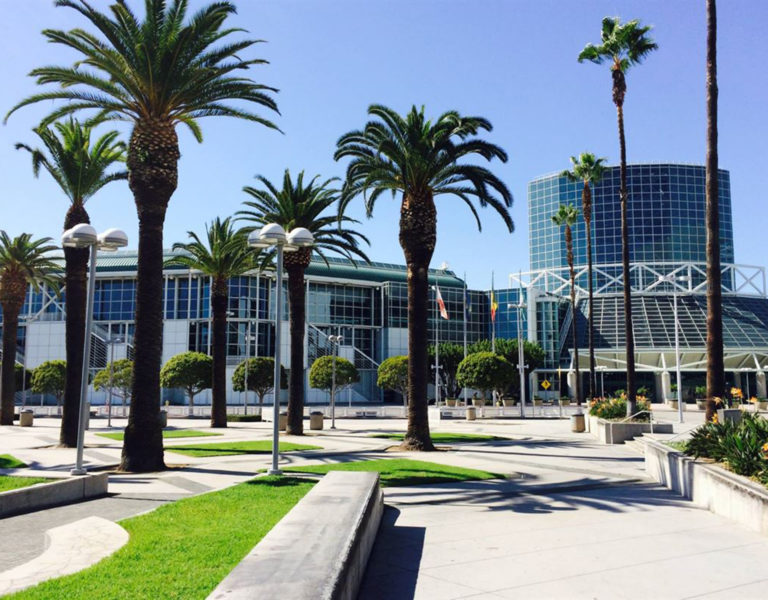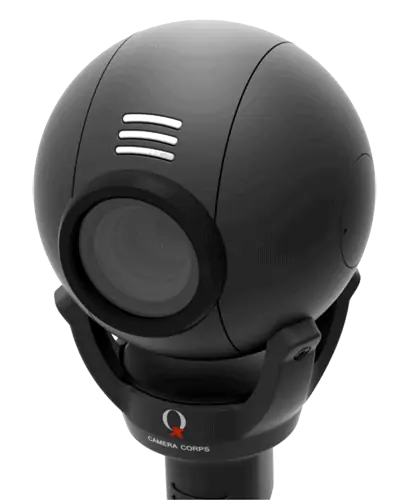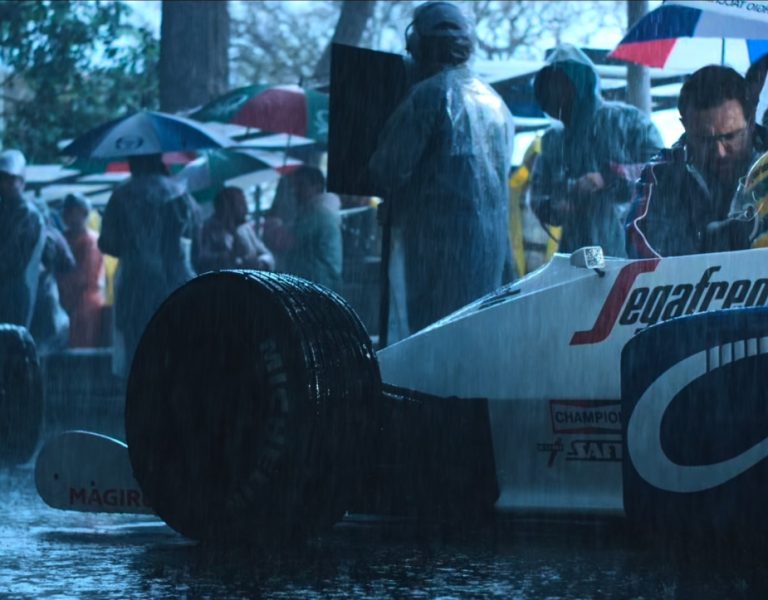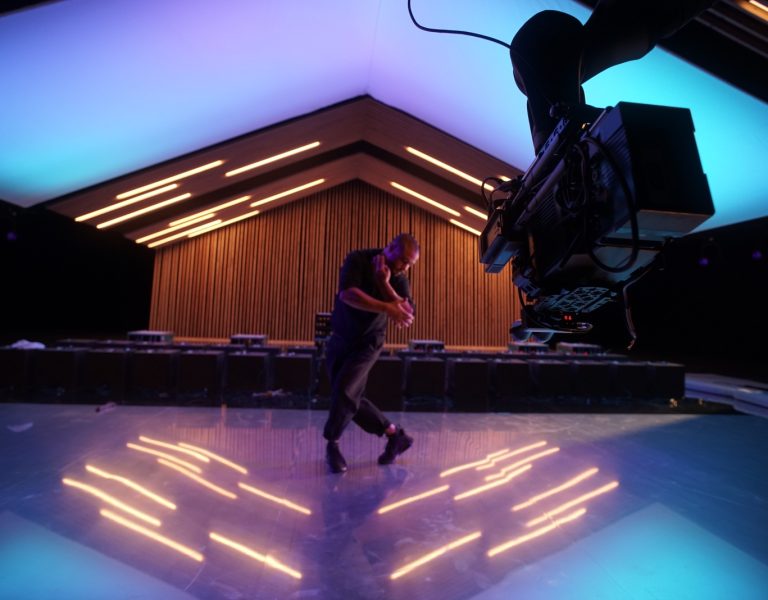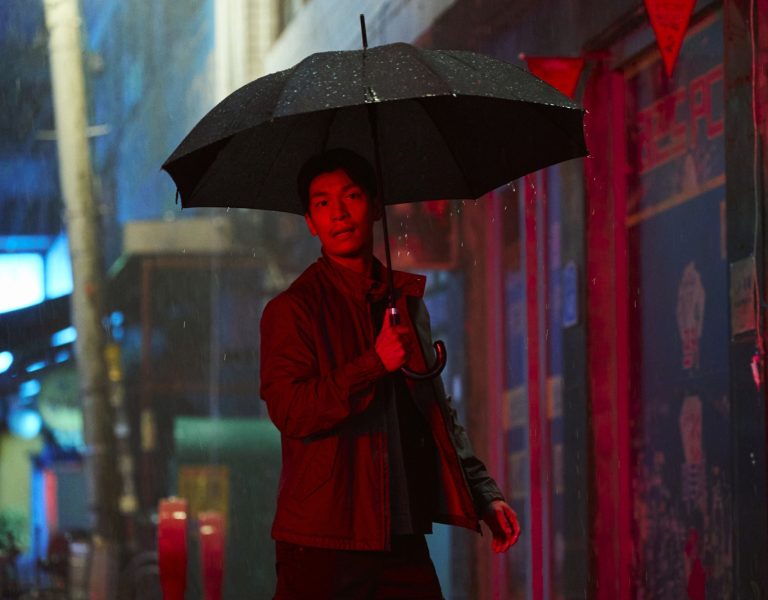In an email about his new Netflix show The Midnight Club, cinematographer James Kniest mentioned audiences “pine to be mesmerised”, which may not only include this fun-and-spooky collaboration with producer/director Mike Flanagan (who co-created with Leah Fong), but may explain much in terms of modern politics, sports fandom, and of course, film and TV watching.
In this case, the mesmerisation comes from a series of books by Christopher Pike, involving a group of terminally ill patients – all young adults – who gather at their hospice each midnight to tell spooky stories (thus giving this anthology series its “wrap”, and allowing collaborations with other DPs within episodes). But one imagines the characters themselves pine to be alleviated from their pain and dread, as well.
Kniest’s collaborations with Flanagan, however, have all been about cultivating that dread within viewers, as their previous outings, also for Netflix, have included The Haunting of Bly Manor and Midnight Mass, where he worked as DP, and doing additional photography, respectively. He’s also recently shot episodes of American Horror Stories.
Kniest, however, says the current collaboration “was in no way informed by any of the other previous shows I’ve done with Mike or any shows Mike has done in general… it is a completely standalone series based on the books,” with each of the episodes having “its own look and feel designed to help tell the story in the tone these kids would have used based on what they may have been influenced by in the late 1980s and early 1990s. Some of the stories have flashbacks and other scenes that require their own look. So there is a myriad of tone, texture and cinematic styles throughout the series… lots and lots of variety in the lighting, set decoration, camera language, production design, lenses, etc.”

And yet that myriad of tones led Kniest to decide on a single camera, with requisite versatility. “I decided to shoot with the Sony VENICE. It was the first real show I’ve done with this camera platform. The decision was based largely on the dual ISO (500, 2500) and the fact that we could use a plethora of different lenses to harness the individual characteristics of a variety of glass to help us create a large number of different looks, vibes, textures and periods. The high resolution helped me be able to scale the framing of S35 to anamorphic to larger format full frame lenses and still be able to meet [Netflix’s] resolution mandate without severe cropping or vignetting. The dual ISO really came in handy with low light scenes and adding stop for tough focus situations.”
That “plethora” also included the different types of lenses used – almost too many to run down here, but they ranged, literally, from A-Z, including Angénieux, ARRI and Fujinon glass, a Hawk 80-180mm V-Plus Anamorphic Zoom, along with a Lensbaby Composer Pro and MasterBuilt Portrait 32/55/100mm, and several others, rounding out to ZEISS Supremes and an ARRI/ZEISS 100mm Master Macro for good measure.
“I was able to establish the ‘A’ story look,” he continues – the hospice library where the Midnight Club meets – “ with a basic LUT and lighting approach that was easily shared. The ‘B’ stories were fair game for the other DPs,” which included Michael Fimognari and Corey Robson, who shared a “motivation and inspiration to push the envelope and take chances and make the visual styles as extreme as possible through lighting and camera language.”
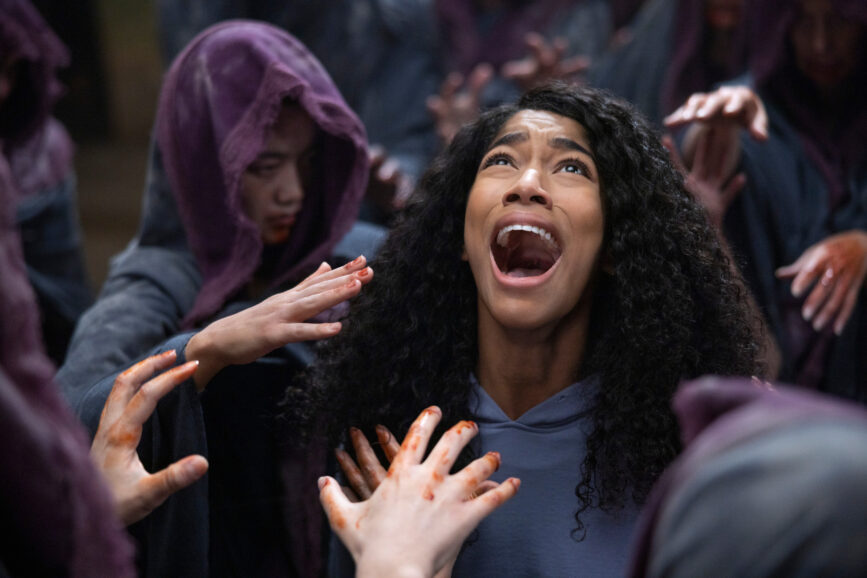
FRIGHT NIGHT
Of course, those “extremes” are especially seasonal as this column alights on the web right around Halloween and Día de los Muertos. In keeping with those chilly autumnal themes, we also talked to Zach Kuperstein, enjoying a moment in – well, if not the sun, then in the sickly fading light of a hallway you dare not enter, as the cinematographer of this fall’s surprise horror hit. Barbarian.
Written and directed by Zach Cregger, it tells of a woman whose double-booked AirBnB rental goes oh-so-wrong. How wrong? Well, it was supposed to be in a neighborhood in Detroit, but it turned out to be in Bulgaria.
Okay, Bulgaria isn’t part of Barbarian’s story, but that is where it was shot, with ‘American’ backlots and customized sets serving to double for certain darkly dodgy neighborhoods in the Motor City.
We last caught up with Kuperstein – also known for the indie horror hit The Eyes of My Mother – during the release of the underrated The Vigil, wherein a man is hired, per Orthodox Jewish custom, to keep watch over a freshly dead body, for a night. It turns out to be a very long night.
Here, it’s the heroine who must be vigilant as what starts with an online cock-up with her accommodations leads to inexorable revelations of the house’s history decidedly kept out of real estate listings.
“The whole thing came out of a production company connected to our financiers,” Kuperstein recounts, noting how the film had initially fallen through at the last minute, before being rescued by other investors at an even “laster” minute. This ultimately led to the decision to shoot in Bulgaria, which had “a studio there that has an ‘America town’ backlot”.
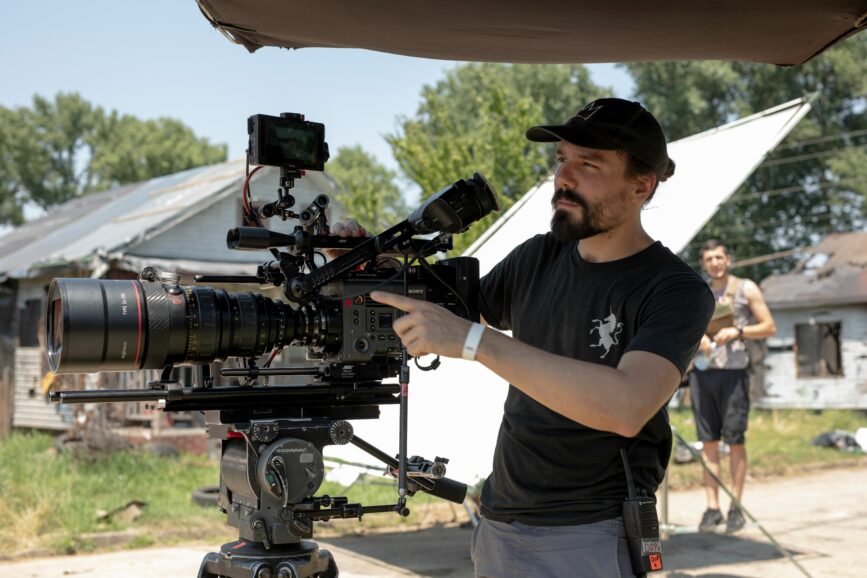
“Okay this could work,” he thought, after scouting with Clegger, but he also discovered “the overview seemed limiting”, and they couldn’t “look in too many directions”. The line producer “suggested we build a neighborhood from scratch – so we did that”, thus giving them the exteriors of the immediately unwelcoming house, that Tess, played by Georgina Campbell, checks into.
They wound up shooting thirty days in Bulgaria, with parts of Sofia doubling for Detroit, with a couple of days in Detroit itself, and some actual shooting along the Pacific Coast Highway, just north of where this column gets tapped out, as absentee landlord Justin Long receives a call that propels him back to an investment property he thought he’d forgotten.
As with Kniest, Kuperstein also captured the sanguinary goings-on with a Sony VENICE. Allowing that he’d been “anti-Sony prior to (Barbarian)”, he found, though, “other DPs were raving about it.” After some testing when they got to Bulgaria, and pairing with some ZEISS Super Primes, he felt that “it was the right choice for the job. The VENICE with the much higher ISO allowed me to shoot in the tunnels with flashlights.” He also liked the built-in NDs: “I’m always adjusting NDs at the last second.”
Another adjustment came with nicknames. Since DP Zach was shooting for director Zach, Kuperstein became “Coop”. “They’re big on nicknames over there,” he says. Indeed, one of the gaffers, who wore glasses, was called “Zeiss” or “Zeisska,” in the diminutive, and who also spoke pretty good English, thus becoming “a lubricant” between the two Zachs, and the rest of the crew.
As for his relationship with that other Zach, “Coop” allows that “we had a lot of productive disagreements”, though they seemed to bear fruit when, after seeing an early cut, director Jordan Poole expressly called out one of Kuperstein’s shots for praise.
Those productive disagreements also led to mutual assent on where to draw inspiration, with the upstairs sequences in the house being “Fincher, and downstairs was Raimi”. Barbarian was also a surprise hit at the box office, grossing over $40 million for distributor Fox-now-Disney, and heading to HBO Max just in time for All Hallows viewing.

OLDER AND WISER
Another celebrated indie-reared director also has sudden mortality on his mind, but not in the “horror” sense – aside from the quotidian type we all face in reconciling ourselves to a different, quieter, existential dread. That would be Kevin Smith, who wraps up his Clerks saga with Clerks III, which is much informed by the original cast’s aging in general, since that first breakout instalment nearly thirty years ago, and more recently, Smith’s own heart attack and survival, elements of which find their way into the story here.
Another aspect of bridging those swiftly-passing years comes in the choice of Learan Kahanov as DP for this outing. He and Smith first crossed paths years earlier, on Chasing Amy, in 1996, where, Kahanov recalls, “I was the gaffer for now-ASC member David Klein. That show was such a great experience (albeit not always easy) and the crew truly felt connected to Kevin and happy to be a part of the burgeoning View Askewniverse.” The two later worked together when Kahanov shot a commissioned Tonight Show short in the Jay Leno era (Flying Car, about the disappointment of the 21st century arriving without them), and then Kahanov worked in NY, on indies, commercials, and eventually, series like Madam Secretary, Stargirl, and more.
In fact, it was on Stargirl that he received a call from Klein, “asking for a ‘favour’. He asked if I could shoot Clerks III, since he was still busy lensing The Mandalorian. I told him that not only would I do anything for him, shooting Clerks III would be an honour. Dave suggested me to Kevin, who responded, ‘Excellent idea.’”
Kahanov wrapped up shooting in Atlanta and headed to Smith’s New Jersey comics shop, for what he “assumed was a final interview. We spoke for two hours or so, catching up on the past 20 years and discussing the third instalment of Clerks. When it was time to part ways, I told him I would love to be a part of the film and to let me know when you all decide on a DP. ‘What?’ Kevin responded, ‘You had the job the moment Dave Klein said your name, I just wanted to catch up!’ And, as they say, the rest was history in the making.”
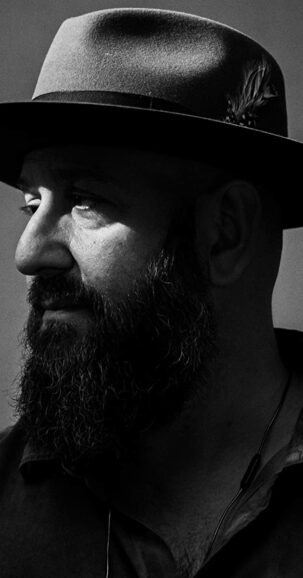
That same sense of gratitude, for those who’ve shared a journey with you, and being able to show it while you still can, comes through in the film, despite – or in some ways, perhaps, because of – the pick-up hockey games, the dick jokes, the workplace ennui, and in particular, a gnawing awareness of potentially missed chances.
As for the more practical consideration of getting it all on “film”, though not 16mm, like the first one – Kahanov, who had about a month to prep for a 23-day shoot, “decided to employ RED cameras for the movie as it was the best tool for this project. I’m all for brand loyalty, however It’s important with all the choices out there now for image acquisition that the reasons are based on the project’s needs and story. Our A camera was the RED Ranger with the full frame 8k Monstro chip. Our B camera was the RED Weapon (DMSC2) again with the same chip and lastly we used the newer RED Komodo 6k for the movie-within-the movie.”
Those cameras were matched with “rehoused Leica R lenses. Both Erik and Oliver Schietinger at TCS film in NYC were amazing in helping us find the right lenses and how to deal with the difference of these former still lenses now in cine-housings,” whose many virtues included “a nice quality reminiscent of older anamorphic lenses”.
As for the movie-within-the-movie, that would be the black-and-white film that titular clerks Dante and Randal decide to make about their lives as… clerks, using pot-shop-next-door buddies Jay and Silent Bob to shoot it. With that footage, “shot on a Monstro full frame sensor, we were tasked with matching all the original footage which was shot in regular 16mm (as opposed to Super16). We all had the reference footage loaded onto our cell phones (in addition to our video playback on the on-set monitors) to match the angles and positions of the actors from when they shot almost 30 years prior. Using a different format/sensor made for some interesting problem solving, especially when working in such tight quarters as the Quick Stop (yes we filmed entirely on location – no sets were built).
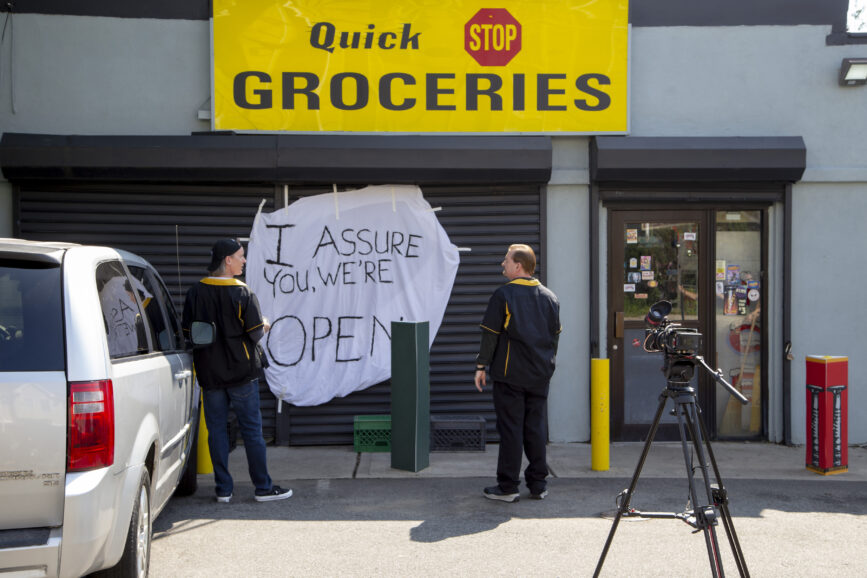
“Everyone rose to the challenge and we took great pride when we got Kevin’s seal of approval for matching the original framing. It is a different type of creativity when needing to emulate previous work, especially when you want to honour and respect the past for what it was. Kevin would often joke how 1993’s ‘they had no clue what we were doing’ is now the ‘style’ we were matching.”
And evidently matched well. “One of the greatest compliments I received was during the first showing on the Clerks III Convenience Tour,” with Smith doing some four-wall self-distribution. “The second B&W shot of the movie came up (both shots matching original scenes frame for frame) and a gentleman in front of me leaned over to his friend and whispered, ‘that looks like original footage.’ He had no clue who I was sitting behind him and it was a really nice moment to have our attention to detail noticed like that.”
The entire experience, Kahanov says, “brought me back to my indie roots and I couldn’t be more proud of what we as a crew and cast pulled off.”
For our part, we will aim to pull off another column in about a month’s time. Until then, may all your hauntings be of the illuminating variety.
@TricksterInk / AcrossthePondBC@gmail.com
